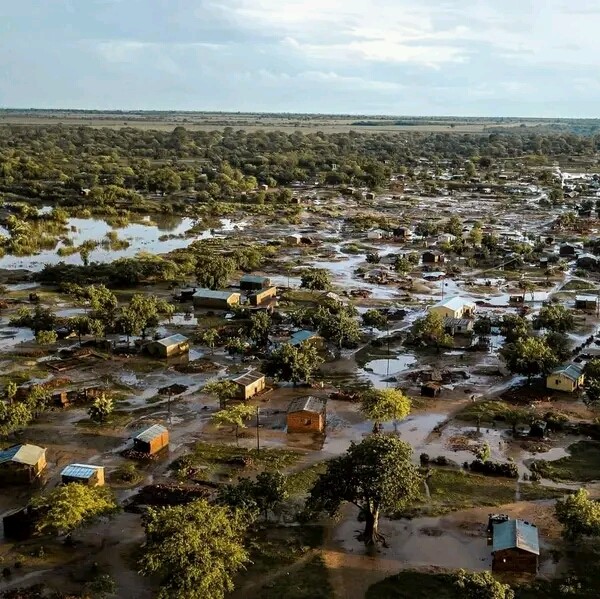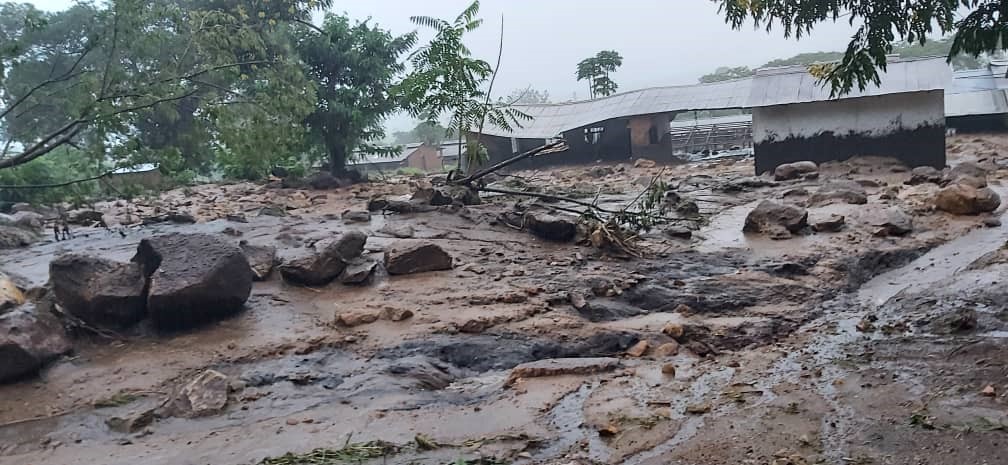 The deadly cyclones that hit southeastern Africa in March could not have come at a worse time. For those in Malawi, the record-breaking rainfall and horrific mudslides ravaged communities already battling their worst cholera outbreak in 20 years — which alone has caused more than 36,000 cases and 1,210 deaths in the last year. These latest health and climate catastrophes, of course, follow the massive health and societal impacts of the COVID-19 pandemic.
The deadly cyclones that hit southeastern Africa in March could not have come at a worse time. For those in Malawi, the record-breaking rainfall and horrific mudslides ravaged communities already battling their worst cholera outbreak in 20 years — which alone has caused more than 36,000 cases and 1,210 deaths in the last year. These latest health and climate catastrophes, of course, follow the massive health and societal impacts of the COVID-19 pandemic.
This pile-on of health crises is no isolated fluke. Increasingly violent storms are occurring more frequently as climate change worsens. And cholera is on the rise — with an increase in cases and geographic distribution driven by climate change, as well as humanitarian crises due to political instability and conflict.
Overlapping challenges such as these exacerbate underlying weaknesses in health systems and threaten decades of global public health successes against tuberculosis, HIV, malaria and other health threats. And while we are making plans for building stronger health systems in terms of the enhanced systems of disease surveillance and greater laboratory and workforce capacity, we must not overlook opportunities to invest in innovations that subtract burden from the system itself. In other words: Complex times require simpler interventions.
I’ve seen and participated in this kind of simplifying innovation firsthand during my years working to improve health systems performance, including as chief medical officer and deputy coordinator for the U.S. President’s Emergency Plan for AIDS Relief during the Obama Administration and as CEO of a large health and research organization based in Zambia. Several opportunities come to mind:
First, streamlined delivery approaches for chronic diseases such as HIV or diabetes. For instance, during the early days of COVID, health programs that were able to streamline access to care proved highly effective and likely lifesaving. Many national HIV programs, encouraged by funders such as PEPFAR, quickly bolstered their supply chains and extended refill times to 6 months for HIV treatment. This quick action simplified the patient experience and mitigated many of the harms people feared most — from treatment interruptions to COVID transmission in clinics themselves. It also likely had the beneficial effect of preserving clinician time for taking care of the surge of sick COVID patients. Similarly, increasing access to cellular devices has led to rapidly expanding telehealth programs in African countries, offering another tool for simplified health care access and resiliency, especially during periods of disruption.
Second, a focus on simplifying drug regimens themselves. After decades of prolonged TB treatment regimens that challenge adherence and are highly susceptible to any form of health system disruption, new WHO guidelines now include new clinically proven drug regimens that can shorten treatment for TB from 6 months to 4 months. Each day, week or month that can be trimmed from lengthy treatment regimens and each averted unnecessary visit to health care facilities contributes to lower burdens on patients, health care workers and supply chains.
Lastly, investments in simplifying our tools for disease prevention reduce the need for sustained contact with the health system. Recent examples of this include new long-acting medications that are able to vastly reduce the risks of acquiring HIV with a single shot every 2 months rather than relying on daily pills and the world’s first malaria vaccine, RTS,S/AS01, approved by WHO in 2021. Mathematical models have predicted that if the malaria vaccine was made widely available in the right settings, it could avert more than 4 million malaria cases each year in children under 5. Likewise, a TB vaccine with similar characteristics to one currently under development could prevent more than 40 million TB cases — averting needs for intensive medical care, while also reducing the consequences of health system disruptions from threats such as emerging diseases, climate crises, or political instability and conflict.
 But if we want to see these health payoffs and reduced health system burdens, we must not only accelerate development of these new tools but also double down on their routine and equitable accessibility. The recent challenge in producing sufficient amounts of lifesaving cholera vaccine has resulted in devastating effects in countries like Mozambique and Malawi, just when they need it most in the face of widespread flooding. And new shorter TB treatment regimens are currently priced out of reach of most national TB programs. Similarly, despite unprecedented efforts and investments, COVID vaccines have been unavailable to many of those seeking them in low- and middle-income countries — a moral and public health failure that cannot be repeated.
But if we want to see these health payoffs and reduced health system burdens, we must not only accelerate development of these new tools but also double down on their routine and equitable accessibility. The recent challenge in producing sufficient amounts of lifesaving cholera vaccine has resulted in devastating effects in countries like Mozambique and Malawi, just when they need it most in the face of widespread flooding. And new shorter TB treatment regimens are currently priced out of reach of most national TB programs. Similarly, despite unprecedented efforts and investments, COVID vaccines have been unavailable to many of those seeking them in low- and middle-income countries — a moral and public health failure that cannot be repeated.
We’re moving into an era of overlapping pandemics and more complex humanitarian conditions. Insulating individuals and communities against these emerging threats will require us to apply lessons we’ve learned from COVID about the value of nimble and streamlined health systems, and should lead us to place greater value on the emerging scientific tools that will simplify care and prevent disease.
